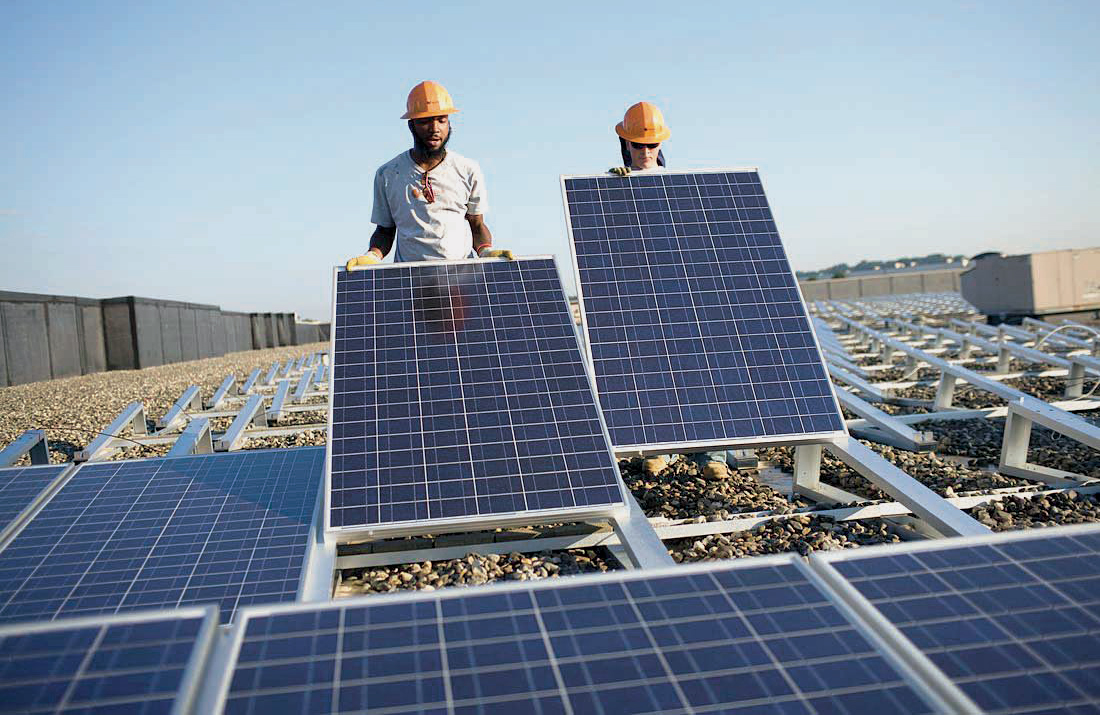

In January, President Donald Trump fired the opening shot of his trade war, slapping tariffs on solar panel imports to boost US manufacturing of a product long dominated by cheap foreign competition.
But other duties his administration has imposed since then are making the solar panel components more expensive — dampening the domestic panel manufacturing sector’s initial hopes for expansion.
The conflicting impacts of his tariffs illustrate the pitfalls the administration faces in using broad protections for economic development — because tariffs meant to help one industry often undermine those shielding another.
Other examples include a levy on imported washing machines to help domestic manufacturers such as Whirlpool, the effect of which has since been undercut by separate tariffs on the imported steel and aluminium used to make them.
For the solar industry, the impact of Trump’s tariffs for companies and jobs gets even more complex.
The United States currently accounts for just a fraction of the fast-growing global panel manufacturing industry, a key reason why Trump moved to protect the US sector.
While the January tariff on panels initially boosted the US manufacturing outlook, it dented the prospects for the panel installation business by making panels more expensive for consumers.
Now solar manufacturers — including four that said they would expand US production after Trump’s January announcement — are also taking a hit, this time from newer tariffs covering a range of Chinese-made components used in panel production.
Two companies with US operations — China’s Jinko Solar and Silicon Valley startup Solaria — said they have scaled back initial growth plans as a result.
“The impacts are generally very, very negative,” Suvi Sharma, the chief executive of Solaria, said.
Jinko slashed a planned $410 million investment at a manufacturing facility in Florida to just $50 million, costing the city of Jacksonville some 600 prospective jobs, according to public disclosures filed by the city council. Solaria abandoned its hopes of boosting production this year at its plant in Fremont, California and adding 20 jobs.
Finished solar panels require scores of components, ranging from aluminium framing to transformers, solar glass and power inverters. Trump imposed tariffs on steel and aluminium early this year, and many of the other materials used in panels now also face duties as part of Trump’s 10 per cent levy on about $200 billion worth of Chinese goods that went into effect in September. The tax on those imports will rise to 25 per cent on January 1.
White House spokeswoman Lindsay Walters said the solar tariffs were designed with other duties in mind and that domestic solar panel manufacturers should consider buying their components from places other than China.
That could be difficult because China is the top source of cheap components. But some panel manufacturers say they are already sourcing panel components from countries other than China, including Korea’s LG, which is starting panel production in Alabama next year, and Canada’s Heliene, which started production in Minnesota in October.
Some component-makers are also shifting production out of China to serve US manufacturers. Enphase Energy, for example, said it will start making microinverters for the US market in Mexico. Its rival, SolarEdge, has said it would move some production to Romania and Hungary.
The $17 billion US solar industry employs more than 250,000 people, most of them in installation and development and only about a fifth in manufacturing, according to the US Energy Information Administration.
The Commerce Department’s senior renewable energy specialist, Cora Dickson, acknowledged at a September solar industry trade show that the tariffs impacting components pose a challenge for domestic panel manufacturers, but added they will be lifted once the US and China come to better terms on trade.
“It’s not designed to cut off trade from China forever,” she said at the Solar Power International conference in Anaheim, California.
Solaria’s Sharma estimated that US tariffs this year have increased the company’s US production costs by about 30 per cent — an amount equal to the original US solar panel import duty.
That means that, instead of ramping up its Fremont, California factory to its full 40 MW of capacity as Solaria had planned this year, it has kept production constant at an unspecified level. — Reuters
Nichola Groom
Oman Observer is now on the WhatsApp channel. Click here



